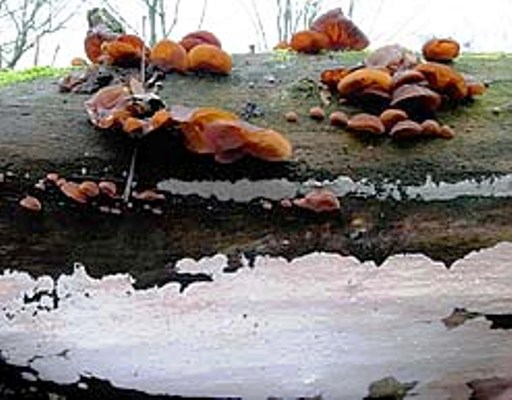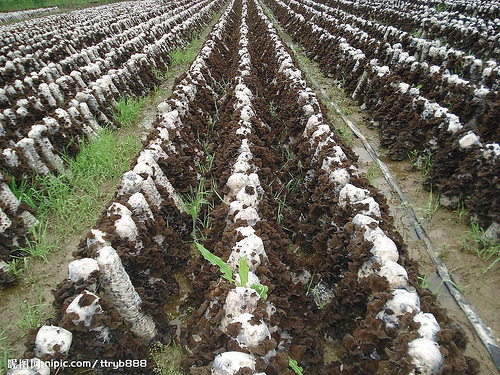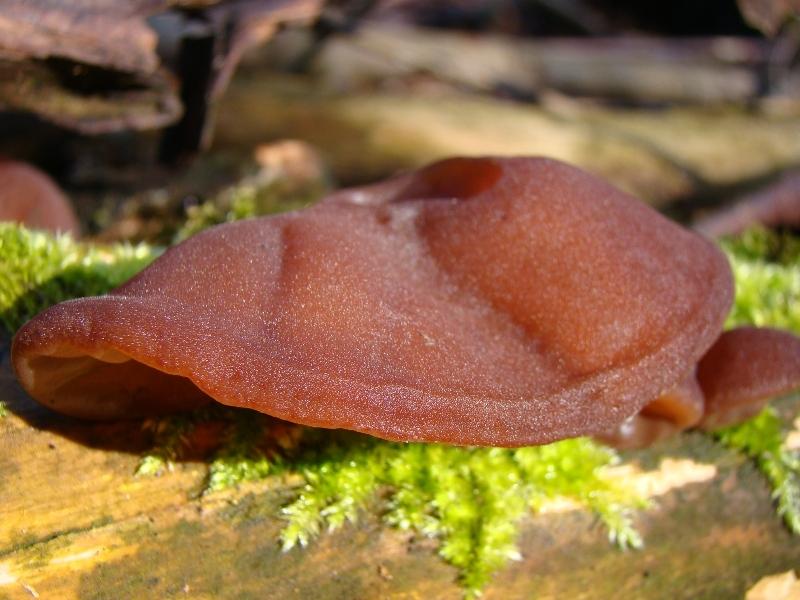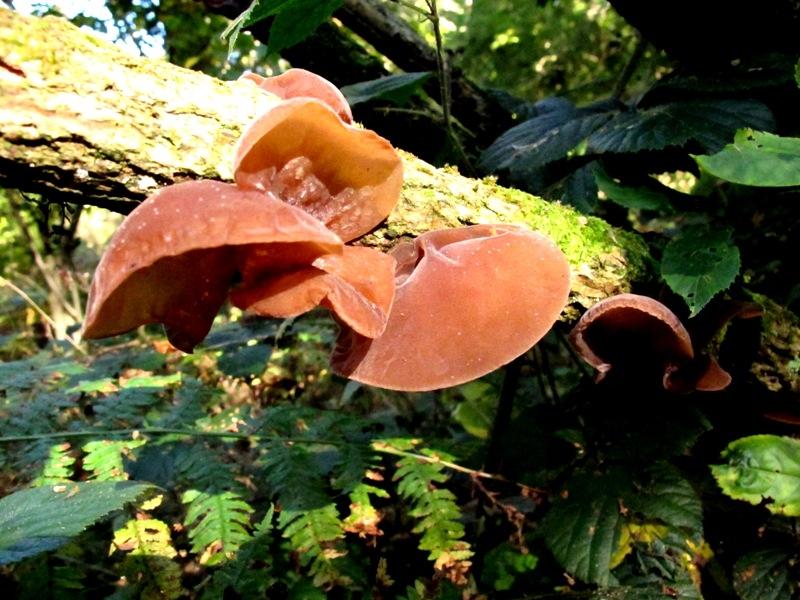Adaptation
The Auricularia auricula-judae fungi have shown to be very resilient to both human and climatic treatments. As mentioned in the facts section, they are able to withstand the January cold temperature and still produce growth. It can generally grow to be about 6cm across. In Asia, when they mass produce these fungi, this wood ear fungus can be easily cultivated on hardwood chips and sawdust (McIntosh, 2009.) So in turn, they can produce the mass volumes and transport them to various commercial locations. What is also very fascinating is that these mushrooms are dried for transport to allow for easier and more manageable travels, and once they are soaked in water, they can return to a almost-fresh state. It is able to accomplish this due to its gelatinous features which allow it to undergo such conditions. Here is a great illustration on the way they mass produce these mushrooms. You can see the bag of wood and the mushrooms growing outside them. A field of mushrooms.
©Flick.com/ Creative common license
©D.Humphries/arbtalk.com
How is it possible for them to do this?
First of all, their hyphae, which are networks of tiny filaments, have walls that are not commonly found in most fungi. Normally, the hyphae walls are thin and rigid, but in the jelly ear fungus, the walls are expanded to an unlimited extent (D'auteur, 2009.) With that being said, when this fungus encounters dry periods the hyphal walls collapse and in a way shrivel which gives it the dry, hard, and black appearance. However, as soon as they come in contact with water or moisture, they expand and resume their original state. Because of the structure of their hyphal walls, they are able to withstand long periods of dry and sometimes cold temperatures, and still keep on living and reproducing. That is why these are one of the first mushrooms that come to "life" in the spring as soon as the winter snow begins to melt. Fascinating.
©D.Humphries/arbtalk.com
Overall, one can see how this mushroom has fascinating adaptations to the environment it is a part of. It can survive for long, dry periods, and also be produced widely for food and human uses.
Now, lets find out how this organisms obtains nutrition to be able to function well in its environment.
Go back to the Home page.
 Auricularia
auricula-judae
Auricularia
auricula-judae 

